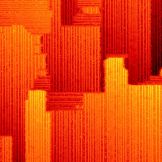Welcome to the Horn-von Hoegen Research Group

21.07.2025 Perfection is impossible…
Physical Review Letters 134, 246202 (2025)
In a large-scale study, experimental groups from Duisburg and Edmonton (Canada), together with theorists from Duisburg and Dresden, demonstrated that certain surfaces can never be prepared in a perfectly ordered ground state. One example is the (001) surface of silicon, which undergoes an order–disorder phase transition at 190 K that becomes asymptotically slower as the transition is approached. During surface preparation, the silicon sample is rapidly cooled from above 1200 °C to 80 K in less than 10 seconds — far too fast to establish order. As a result, critical fluctuations freeze in via the Kibble–Zurek mechanism, leaving behind persistent defects.
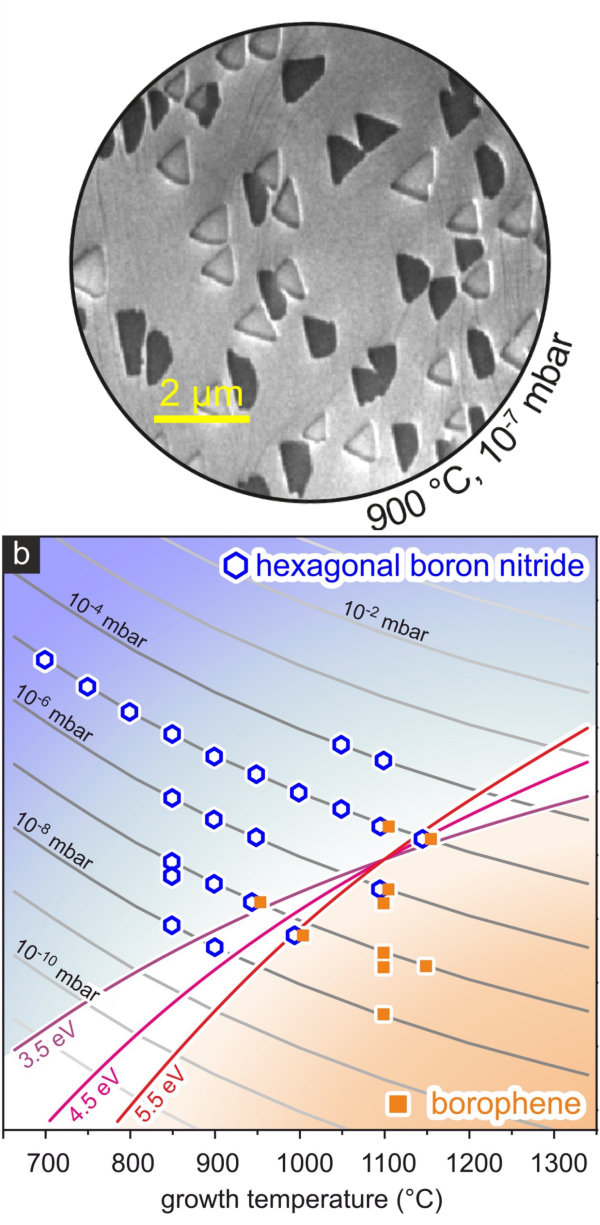
11.03.2024 Competing Processes set the Limit
ACS Nano 17,17946 (2023)
How can perfect monoatomic layers of hexagonal boron nitride - the insulating pondon to graphene - be fabricated? The naive approach of fabricating the 2D layer from the precursor borazene at the highest possible growth temperatures of more than 1000 °C leads to the contrary result: the bi-elemental molecule decomposes into its atomic components boron and nitrogen, the latter desorbs and borophene, a 2D layer of boron, is formed instead. The competition between kinetic limitation and thermally activated decomposition results in an optimum growth temperature of 950°C on the Ir(111) substrate. These findings are the result of a comprehensive study using in-situ reflection profile analysis in electron diffraction (SPA-LEED) and in-operandi electron microscopy (LEEM). The work was published in the highly ranked journal ACS nano.
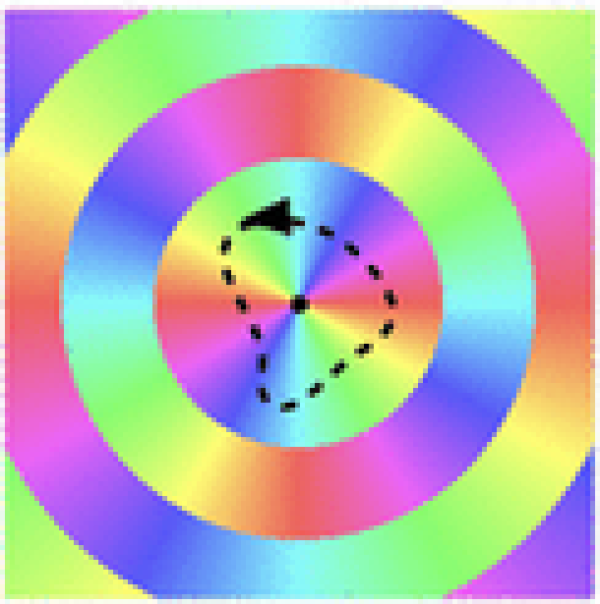
05.10.2023 Topology of Surface Plasmon Polaritons with Integer and Fractional Orbital Angular Momentum
ACS Photonics 10, 3772–3780 (2023)
Surface Plasmon Polaritons are (in a simple picture) light trapped at surfaces. More precisely, surface plasmon polaritons (SPPs) couple oscillations of electrons in a suitable metal surface to an electric field, which can then propagate in a wavelike manner within the surface plane. In project B06 of SFB 1242, SPPs are excited with laser pulses on structured gratings and investigated on a femtosecond time scale in a photoemission microscope. In recent years, special attention has been paid to imprinting angular momentum to the SPP waves. For this purpose, a circularly polarized laser pulse is coupled to a suitable excitation structure in which the photon spin is converted into an orbital angular momentum. In the past, integer values l were always chosen for the angular momentum l \hbar, in analogy to the quantum mechanical angular momentum algebra. Now, in a joint work with Harald Giessen (University of Stuttgart) and Frank Meyer zu Heringdorf, Tim Davis from the University of Melbourne, a regular guest of SFB1242 and Mercator Fellow in the Stuttgart Research Training Group GRK 2642, has investigated situations in which the angular momentum is not integer but fractional. Such an excitation gives rise to an extremely complex field whose topological properties have now been analyzed in detail by Davis et al.
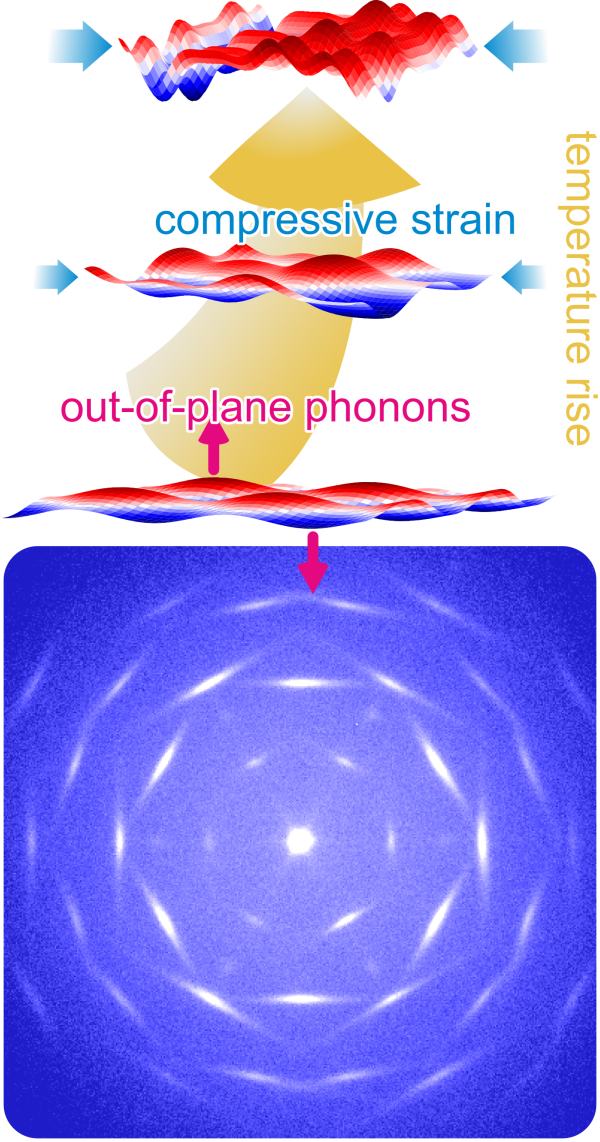
30.05.2023 Incommensurability and negative thermal expansion of single layer hexagonal boron nitride
Appl. Surf. Sci. 624, 157156 (2023)
That materials expand when heated is something we learn early on in school, but that this can be completely different in the quantum world is probably unknown. Ultrathin 2D materials, such as hexagonal boron nitride (hBN for short), contract when heated because phonon amplitudes perpendicular to the surface become large, leading to contraction via the membrane effect already described by famous Lifshitz. In cooperation with ICAN at UDE, we have succeeded in demonstrating this contraction for hBN. For this we used high resolution electron diffraction to determine and evaluate the interatomic distance for different growth temperatures. It quickly became apparent that hexagonal boron nitride is an excellent model system for the physics phenomena in such 2D materials, which is why it is likely to remain the object of intensive research in the future.
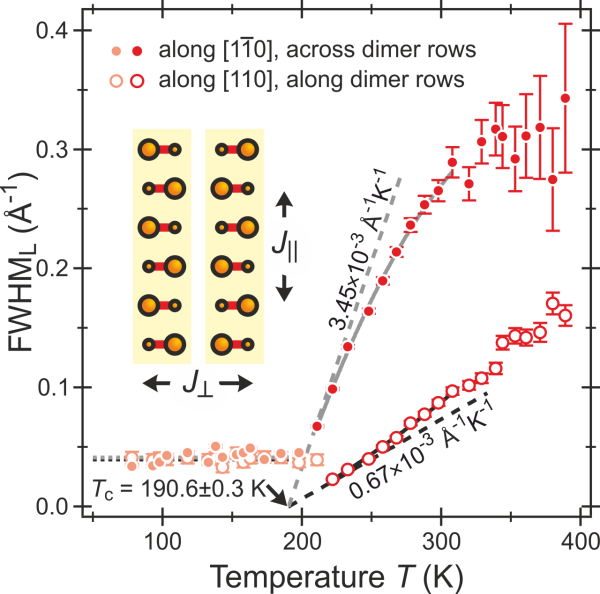
25.04.2023 Determination of Coupling Energies made easy
Phys. Rev. Lett. 130, 126203 (2023)
The perhaps most important surface in the modern world is the Si(001) surface, since the vast majority of computer chips are produced on it. Nevertheless, some material properties of the surface are still unknown. However, by observing the order-disorder phase transition at 190 K, one of the remaining mysteries has now been solved. The evaluation of the reflection profiles in electron diffraction within the framework of the two-dimensional Ising model allows the precise determination of the coupling energies between the essential structural elements of the surface, so-called dimers. The results were recently published in the journal Physical Review Letters.
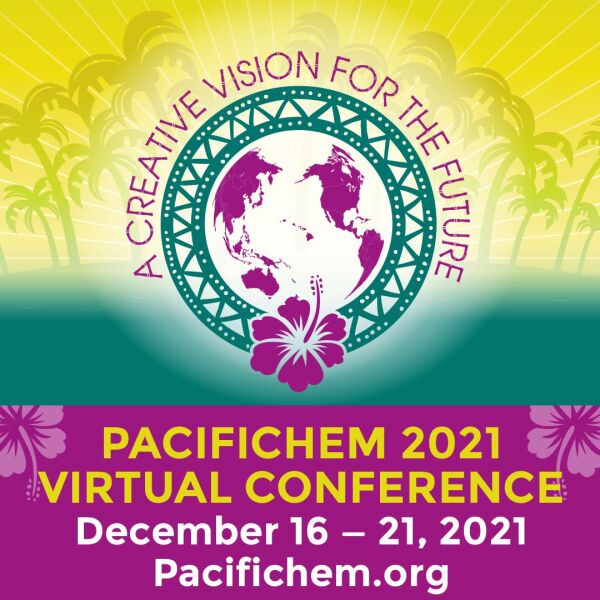
16.12.2021 Pacifichem 2021 in Honolulu
The meeting was supposed to take place from December 16-21 in Hawaii. It did - unfortunately only virtually. The talk on ultrafast electron diffraction is available here.
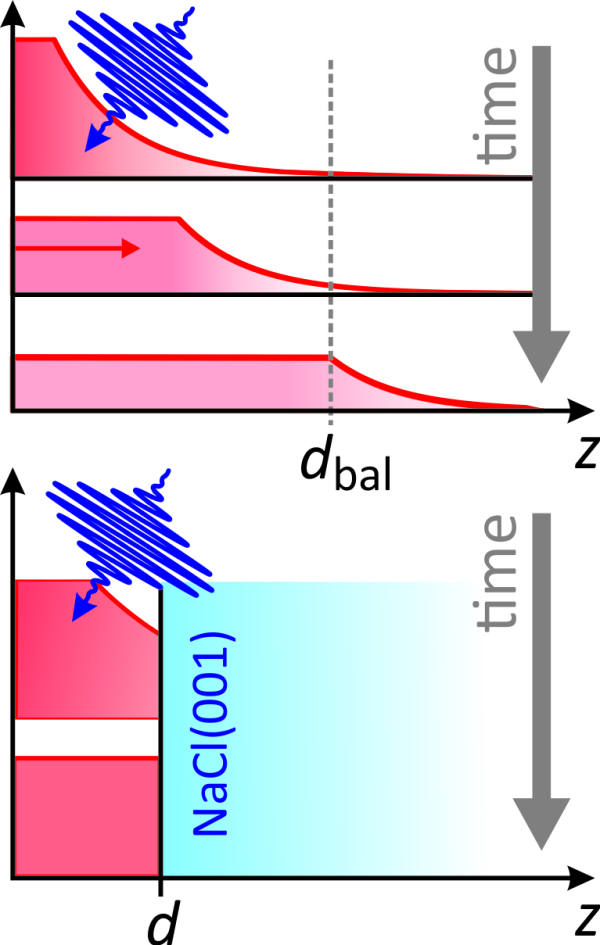
31.08.2021 Atoms vibrating in concert
Appl. Phys. Lett. 119, 091601 (2021)
Ballistic transport of hot charge carriers limits the excitation amplitude of coherent optical phonons in the semimetal bismuth. An international consortium of researchers from New York, Stanford, Waterloo, Cincinetti, Paris, Brazil and Duisburg was able to determine the free ballistic path length to 35 nm by varying the film thickness of bismuth films. Reflectivity oscillations were evaluated by means of so-called pump-probe experiments in which the periodic motion of the atoms could be directly followed at a frequency of almost 3 THz. The publication was honored by the editor as "Editors Pick".
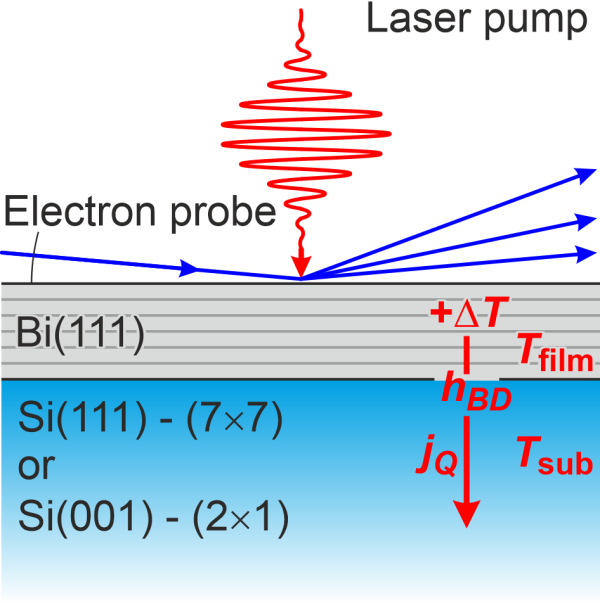
26.08.2021 Phonons totally reflected
Nano Lett. 21, 7145–7151 (2021) (2021)
How do ultrathin films dissipate their heat? This question - also relevant for modern semiconductor technology - was investigated by researcher Anja Hanisch-Blicharski using ultrafast electron diffraction as a contactless thermometer. Epitaxial bismuth films only a few atomic layers thick on a silicon single substrate served as the object of investigation. The phonons - quasiparticles of heat - are refracted during transmission through the atomically smooth interface following Snells' law of refraction. Since the speed of sound in Bi is lower than in silicon by a factor of five, total reflection occurs for angles of incidence greater than 20° and the film stops cooling. Scattering processes among the phonons then act as a bottleneck for further cooling of the bismuth film.
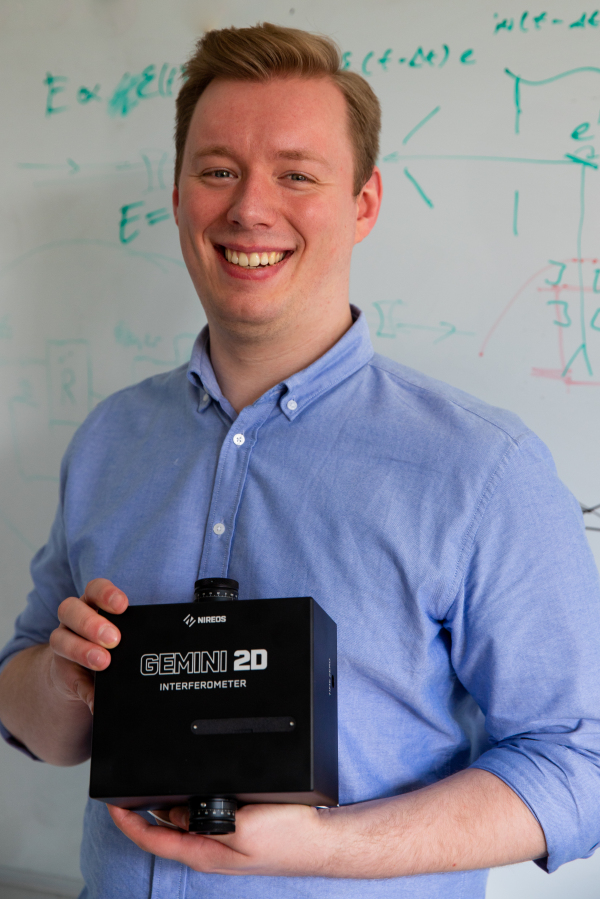
21.06.2021 New Single-Path Interferometer
In order to further push the temporal limits of the plasmonic photoemission experiment in Project B06, the graduate school of the SFB 1242 has supported a proposal by M.Sc. Pascal Dreher to purchase a Single-Path Interferometer. Interferometers were already used in the project to divide incoming femtosecond laser pulses into pulse pairs, where a sub-femtosecond time delay between the two pulses could be adjusted in a controlled manner. In the new instrument, however, the laser pulses are no longer spatially separated, as was previously the case, which increases the stability down to the sub-attosecond range and enables experiments that were previously completely unthinkable.
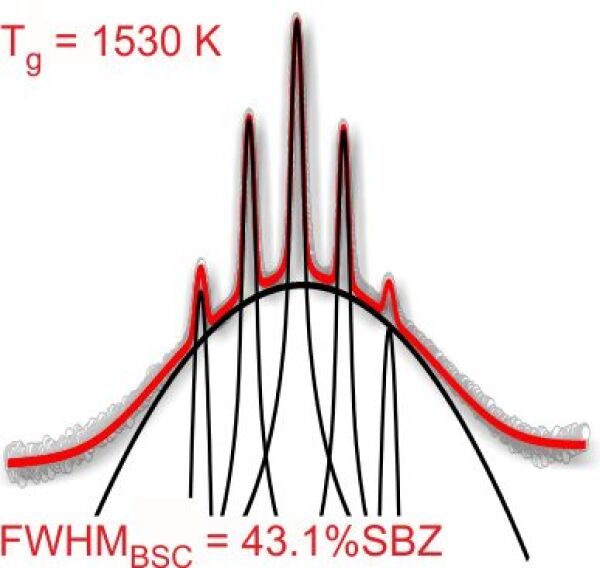
17.06.2021 On the trail of mystery
Appl. Phys. Lett. 118, 241902 (2021)
Tens of thousands of times investigated but so far nobody noticed: graphene and also other 2D materials exhibit a so far not understood very broad bell shaped component in the diffraction of electrons. This diffuse intensity cannot be due to disorder or defects since this bell shaped component is observed even for the most perfect 2D materials. Marko Kriegel and Karim Omambac have now demonstrated this for two other systems as well. Possible explanations span from Heisenberg's uncertainty principle via quantum mechanical zero-point oscillations to localized inelastic excitations: Suggestions are welcome...
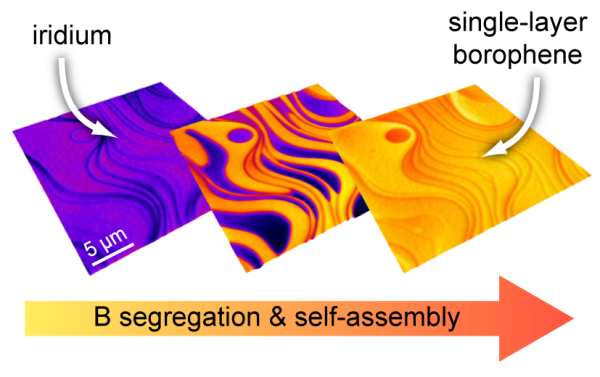
29.04.2021 Atomic Layer Pushes Surface Steps Away
ACS nano 15, 7421 (2021)
Elbow mentality in a two-dimensional material: By segregation from the iridium substrate, Karim Omambac was able to produce single-atom layers of boron - so-called borophene. In the process, the material simply pushes interfering stepped edges of the substrate out of the way! The results were published in the highly respected journal ACSnano.
UDE press release
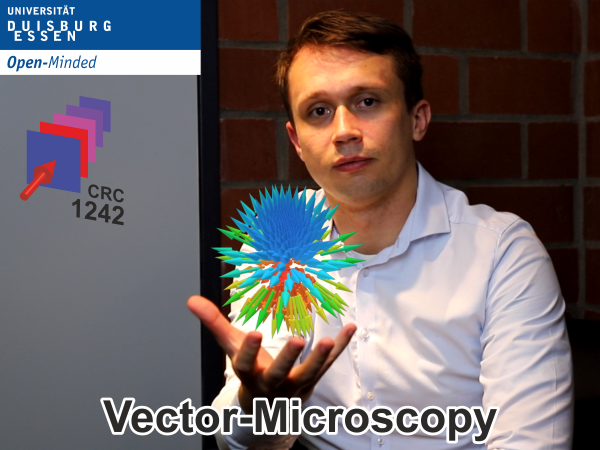
30.09.2020 David Janoschka presents video poster at LEEM/PEEM 11.5 conference
Link to video on youtube
During the pandemic, many conferences have moved towards an on-line format. This is also true for the biannular LEEM/PEEM conference, which focuses on low energy microscopy and photoemission microscopy. Ph.D. candidate David Janoschka had the opportunity to present his research on vector microscopy during the on-line conference as a video-poster. Follow the link to see his poster and enjoy a journey into our femtosecond microscopy lab.
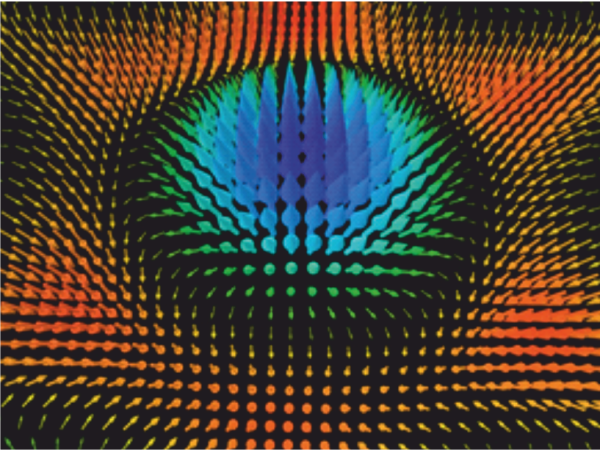
24.04.2020 Vector Microscopy in SCIENCE Magazine
Science 368 (2020)
The duration of their snapshot relates to one second as one second relates to the age of the universe: In a joint collaboration with Australian Scientist Tim Davis and the Group around Harald Gießen from Stuttgart, Physicists from the Center for Nanointegration (CENIDE) at the University of Duisburg-Essen (UDE) have developed ultrafast vector microscopy as a way of determining electric fields on surfaces with high temporal and spatial resolution. The new method was used to measure the dynamics of optical skyrmions in the time domain for the first time. The renowned journal "Science" publishes this breakthrough in nanooptics in its current issue.
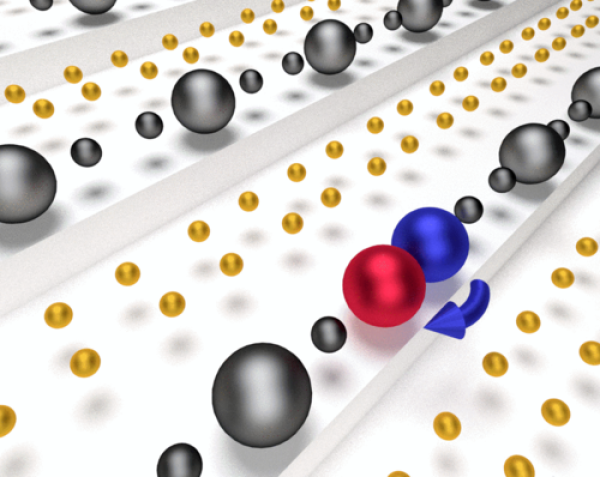
10.01.2020 Only a light touch of gold…
Phys. Rev. Lett. 124, 016102 (2020)
Through self-assembly of less than a single atomic layer of gold, almost perfect atomic wires can be produced on a stepped silicon surface. At low temperatures, the silicon atoms of the step edges form a perfect 2D array. At higher temperatures, thermally generated pairs of solitons and antisolitons cancel out the perfect order above 100 K. This leads to a loss of interwire-order, which triggers a dimensional 2D→1D transition. The underlying fundamental mechanism was established using experimental observation, analytical description, and simulations and has been published in the journal Physical Review Letters.
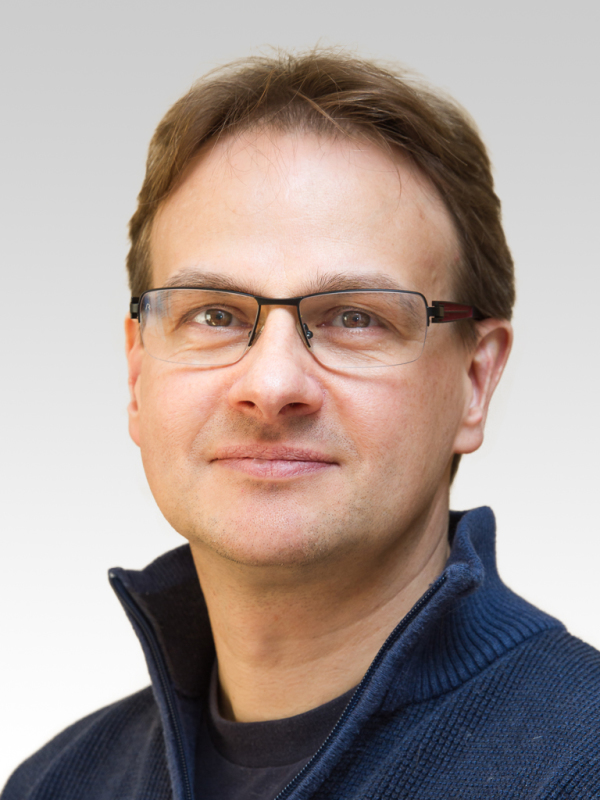
01.10.2019 New Scientific Director of the ICAN
Prof. Frank Meyer zu Heringdorf was appointed Scientific Director of the Interdisciplinary Center for Analytics on the Nanoscale (ICAN) on October 1st, 2019. He succeeds Prof. Axel Lorke, who filled this important position at the Center for Nanointegration (CENIDE) for two years. Meyer zu Heringdorf is a long-standing and worldwide leading expert for microscopy with low energy electrons (LEEM & PEEM) and thus provides the best prerequisites for scientific leadership within the ICAN. Under his supervision, the five scientists at ICAN will perform analyses with TEM, XPS, Auger, AFM, TOF-SIMS and other techniques.
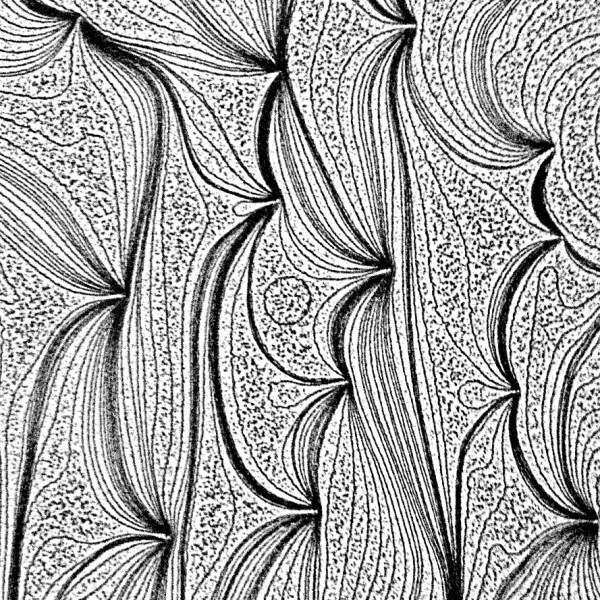
07.08.2019 Editor´s Pick in Structural Dynamics
Structural Dynamics 6 (2019)
The velocity of a 1D propagating recrystallisation front was determined for the atomic wire system of indium on Si(111) by ultrafast electron diffraction. At a speed of 100 m/s, the system falls back from an excited metastable state - generated by an fs-laser pulse - to the ground state: like a chain of falling dominoes. This recrystallization front is triggered by the few atomic step edges of the almost perfectly smooth surface of the silicon sample.
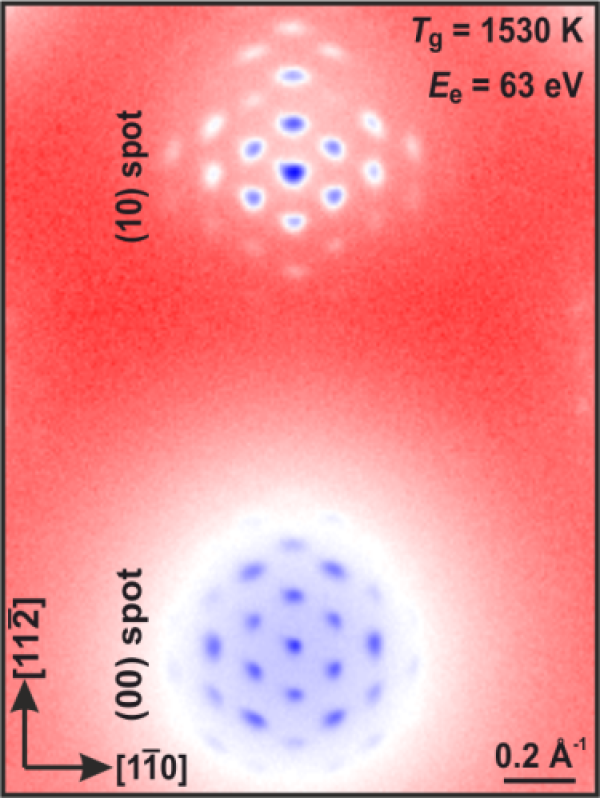
17.07.2019 Graphene likes the Twist
Nano Lett. 19 (2019)
Graphene does not like to be compressed – instead it forms twisted domains during epitaxial growth on an iridium substrate. This surprising result of small-angle rotations were found in the team of Michael Horn von Hoegen through unique moiré pattern in high-resolution low energy electron diffraction. The thermal expansion of the substrate acts as an effective compressive biaxial pressure on the graphene, which is more easily accommodated by small rotations rather than by compression. This effect is lately referred to as rotational epitaxy. The results have now been published in “ACS NanoLetters”.
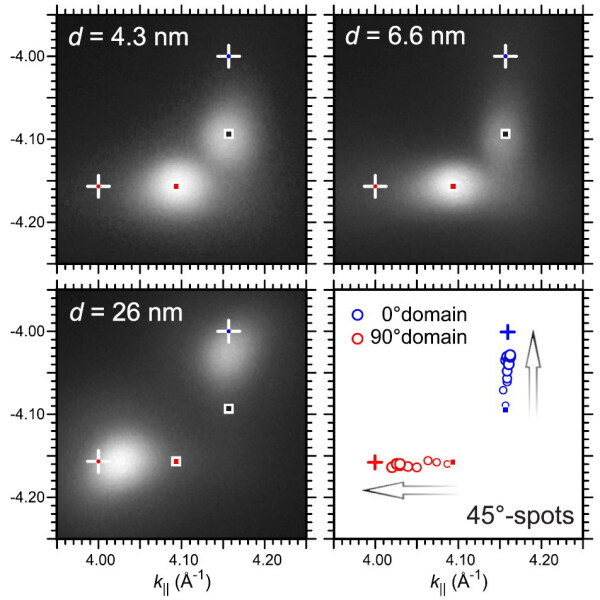
26.02.2019 Editors Pick in Applied Physics Letters
Applied Physics Letters 114 (2019
The publication "Rapid Onset of Strain Relief by Mass Generation of Misfit Dislocations in Bi(111)/Si(001) Heteroepitaxy" was honored as "Editors Pick" at Applied Physics Letters. Dennis Meyer describes the relaxation of a heteroepitaxial Bi(111) film on a Si(001) substrate. The anisotropic lattice mismatch of 2.4% between bismuth and silicon at a layer thickness of 4 nm is compensated by suddenly generated dislocations at the interface between Bi and Si. From the relative displacement of two LEED diffraction spots, the formation of these dislocations was observed with high accuracy during growth.
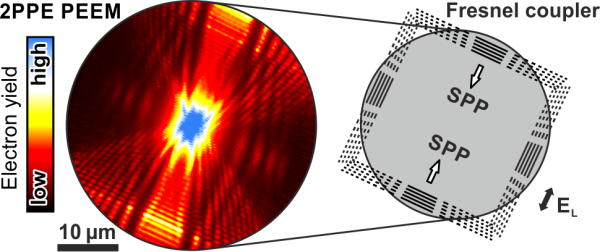
26.02.2019 Plasmons in ACS Photonics
In the 19th century, Augustin Jean Fresnel invented his zone-plate; basically a hologram, which - by diffraction - forms a defined focal point if illuminated with a plane light wave. Frank Meyer zu Heringdorf's TR-PEEM Team has now applied the concept of Fresnel-focusing to surface-plasmon-polaritons, i.e., to electron-density waves that can propagate at metal surfaces with almost the speed of light in vacuum. Instead of focusing traveling plasmon waves by a Fresnel type zone plate, however, the team structured particular Fresnel-type grating couplers that were illuminated by femtosecond laser pulses, and that very effectively excited plasmon waves forming a focus at a desired location. Using their time-resolved photoemission microscope, the team could characterize this "Fresnel-optics for surface plasmon waves" in detail, and they could follow the formation of the focus in a super-slow motion movie on the femtosecond time-scale. The results were now published in ACS Photonics.

08.11.2017 New Publication in Nano Letters
It is a well-established fact that the illumination of a surface with light of sufficient photon energy results in the emission of electrons. But is the same also true if surface plasmon polaritons are used instead of the light? Surface plasmon polaritons are electron density modulations that can optically be exited at noble metal surfaces and that can propagate across the surface as a wave. The local variation in electron density of the plasmon is coupled to an electric field, so it sounds reasonable to assume that electron emission might be possible from a surface plasmon polariton. To experimentally verify this hypotheses, the TR-PEEM team around Prof. Frank Meyer zu Heringdorf used custom-tailored grating couplers to focus surface plasmon polaritons into a small spot. By employing femtosecond time-resolved microscopy, the team was able to separate light-induced effects from plasmon-induced effects in time and space and were able to unambiguously distinguish between the well-known photoemission and what the team coined “plasmoemission”. As the plasmon intensity is high in the focus spot, the team observed highly nonlinear emission behavior, i.e. processes, where five plasmon quanta were absorbed by one electron prior to emission from the solid.
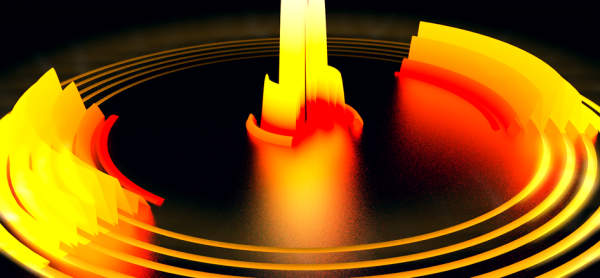
12.07.2017 New Publication in „Science Advances“
It is not possible to focus light into an arbitrarily small spot. Even if one used enormously large lenses, a parallel beam of light would be focused into a “beam waist” instead of a point-like focal spot. The diameter of the beam waist depends on the wavelength of the light to be focused. In a collaboration with colleagues from Stuttgart and Haifa, the team of Prof. Dr. Frank-J. Meyer zu Heringdorf has now used a trick to nevertheless indirectly focus light into a small sport. The team used 800nm light to excite surface plasmon polaritons at the interface between an atomically smooth Gold platelet and a Silicon substrate. Such “short range” plasmons exhibit a wavelength of only 180nm. By forming a plasmonic focus and by using a transient standing wave field, the authors were able to create an electron-emission spot with a minimal dimension of only 60 nm.
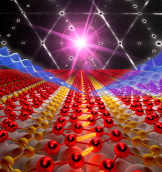
30.03.2017 Atomic Wires in NATURE
Using ultrafast electron diffraction, the dynamics of a structural phase transition driven by femtosecond laser pulses could be observed with atomic spatial and femtosecond-temporal resolution. With a time resolution of less than 350 fs (10-15 s), Dr. Tim Frigge succeeded in tracing the movement of the atoms for the first time. These ground-breaking results have been published in Nature, supplemented by the work of the Bovensiepen group at the University of Duisburg-Essen and the work of the Schmidt group at the University of Paderborn.
You can read an article about it in Physics World here
You can read the University of Duisburg press release here: English Deutsch
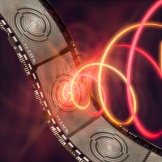
17.03.2017 Rotating Plasmons Vortices in SCIENCE
In cooperation with scientists from the universities of Haifa (Israel), Kaiserslautern and Stuttgart, Professor Frank Meyer zu Heringdorf’s team published an article in Science magazine. Using time-resolved non-linear photoemission microscopy, surface plasmon polariton waves were observed with sub-femtosecond time-resolution to spiral to the center of an archimedean spiral. The spiral plasmon waves show an orbital angular momentum that was imprinted into the plasmon wave by using circularly polarized femtosecond laser pulses.
You can read an interview about it here (in German).
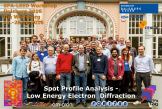
28.10.2016 SPA-LEED Workshop 2016: A Great Success!
For almost two days, 50 participants presented and discussed their research results in the "Wolfsburg" in Mülheim an der Ruhr. Four high-ranking speakers (Claus Ropers (University of Göttingen), Stefan Kowarik (HU Berlin), Michael Tringides (Ames Lab, University of Iowa) and Michael Ramsey (University of Graz)). The workshop was financially supported by CENIDE, the SFB 1242, the FOR 1700 and the SPA-LEED manufacturer ScientaOmicron. The next SPA-LEED workshop will be organized by Professor Christian Kumpf of the Forschungszentrum Jülich in 2018.
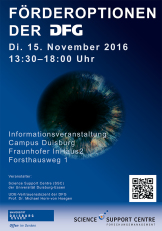
14.10.2016 DFG Information Meeting
At the next DFG information meeting, organized by the Science Support Center of the University of Duisburg Essen, Professor Michael Horn-von Hoegen will be giving advice for writing successful poposals. The meeting will be held at the Fraunhofer Haus 2 on November 15, 2016. After the general meeting, individual coaching will take place in workshops until 6 pm.
You can find more information here (in German).
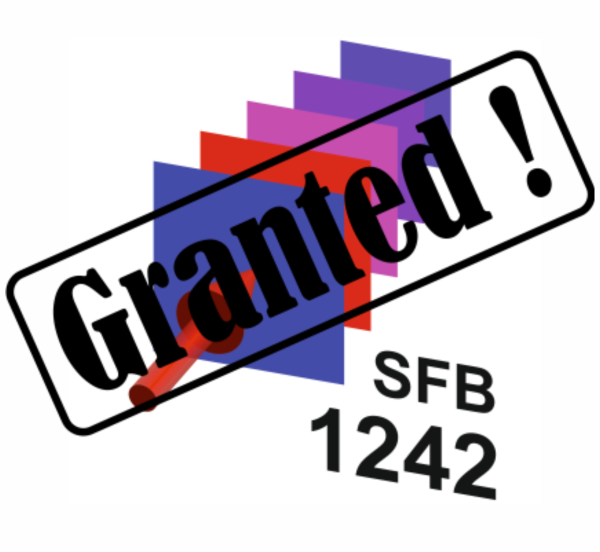
20.05.2016 The Collaborative Research Centre 1242 Is Established
The DFG has established the SFB 1242, titled "Non-equilibrium dynamics of condensed matter in the time domain" in the Department of Physics. Starting on July 1, three projects in our workgroup will be funded with a total of four doctoral students and one postdoc, and these projects will examine the ultrafast structural and electronic dynamics of surfaces and thin films. In project C3 "Driven phase transitions on surfaces", a new apparatus for ultrafast electron diffraction will be built to break the current world record for the time resolution of 350 femtoseconds. With an improved time resolution of 200 femtoseconds the movement of atoms could be directly followed! In project B4, "Non-equilibrium dynamics of the phonon system", the generation, transformation and non-equilibrium of phonons in adsorbate systems and thin metal films is monitored by means of inelastic ultrafast electron diffraction after impulsive excitation. In project B6, the spatial-temporal separation of laser and plasmon pulses on the femtosecond time scale achieved in preliminary work is to be used in order to allow the targeted interaction of plasmon waves with one-particle electron excitations in nanostructures.
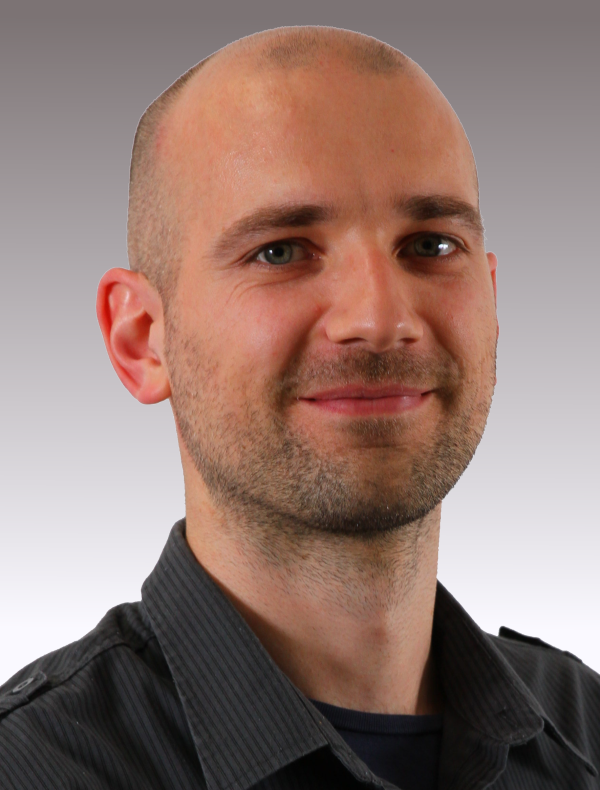
01.05.2016 Humboldt Foundation Scholarship Awarded to Dr. Marin Petrovic
After completing his dissertation in Zagreb on the topic of graphene, Dr. Petrovic successfully competed for a coveted Alexander von Humboldt Foundation fellowship. In cooperation with his host, Professor Frank Meyer zu Heringdorf, Dr. Petrovic will use low-energy electron microscopy (LEEM) to examine the growth of hexabornite nitride (hBN) Layers on iridium as well as the formation of lateral graphene / hBN heterostructures (in-situ).
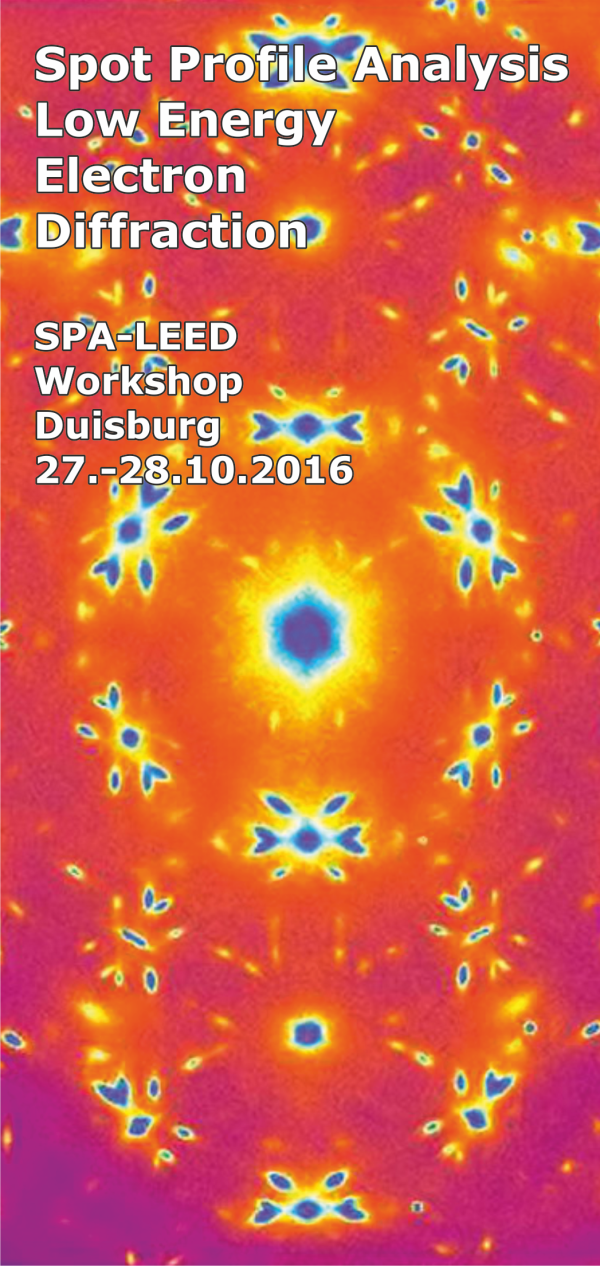
15.04.2016 SPA-LEED Workshop 2016
Spot Profile Analysis Low Energy Electron Diffraction, i.e., SPA-LEED, was developed at the University of Hannover in the 1980s, and has since then acquired a dedicated group of researchers who have applied the technique to a variety of surface science problems. Researchers who work actively with SPA-LEED meet every 1-2 years for an informal exchange of their research and to discuss the future of the method.
The last meeting was in Hannover on the occasion of Professor Martin Henzler’s 80th birthday; the next SPA-LEED workshop will be hosted by Professor Michael Horn-von Hoegen and Professor Frank Meyer zu Heringdorf from the University of Duisburg-Essen, Germany.
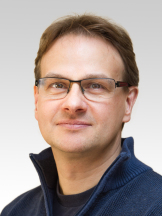
12.08.2015 Frank Meyer zu Heringdorf Appointed Associate Professor
Dr. Frank Meyer zu Heringdorf was appointed associated professor on August 12, 2015, with the three external experts on the recommendation panel praising his stellar performance in research and teaching. Professor Meyer zu Heringdorf will hold an introductary lecture addressing plasmon propagation in slow-motion as part of the physics colloquium on April 27th, 2016.
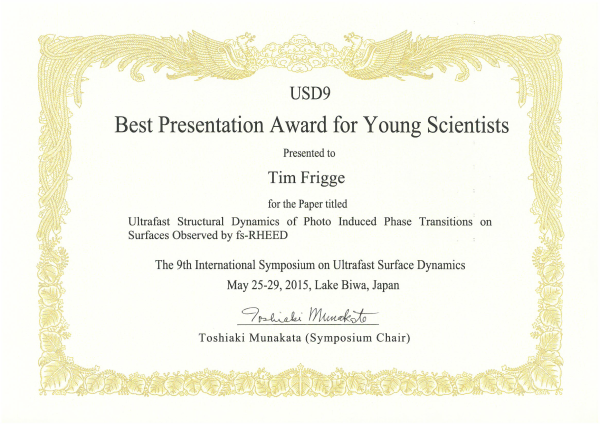
29.5.2015 Tim Frigge Wins Award at Japanese Symposium
At the "9th International Symposium on Ultrafast Surface Dynamics" in Lake Biwa, Japan, Tim Frigge won the "Best Presentation Award for Young Scientists" award for his lecture "Ultrafast Structural Dynamics of Photo Induced Phase Transitions on Surfaces Observed by fs-RHEED."
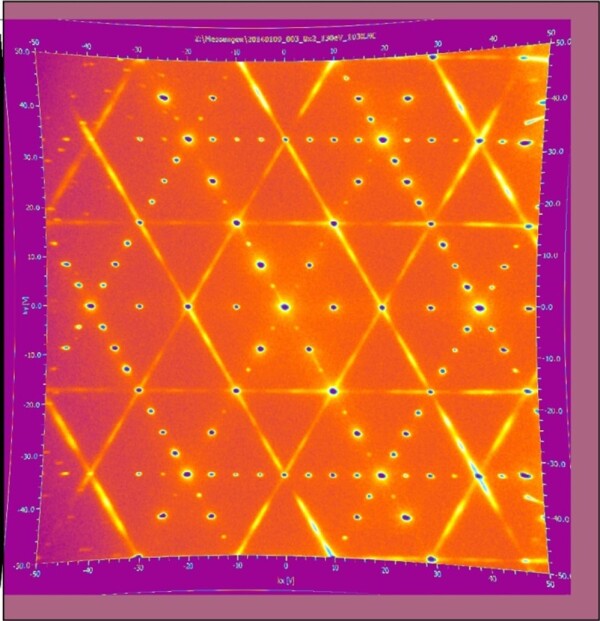
19.03.2015 DPG Spring Meeting
The following invited talk will be presented at the Spring Meeting of German Physical Society in Berlin:
"1D Metal Wires at Surfaces: Preparation, Phase Transitions, and Ultrafast non Equilibrium Dynamics"
You can download the PDF-version here.

